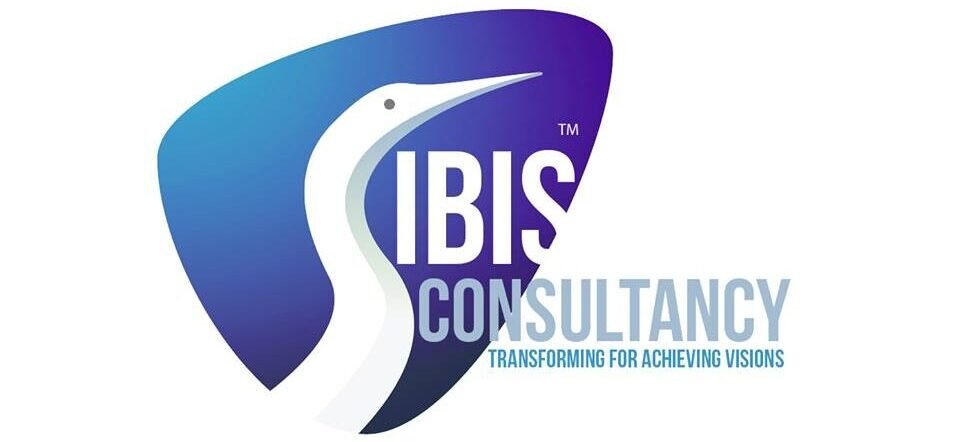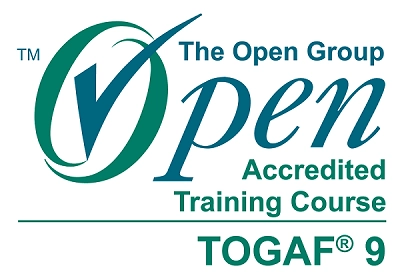Implementation: The TOGAF® Standard
- Course Duration: 15+h
- qualification: TOGAF
About this course
Introduction
Our Implementation: TOGAF 9 course explains how to integrate theoretical knowledge into practical enterprise architecture.
Using an incremental teaching structure, the course covers the allied yet distinct areas of enterprise architecture within a typical organization.
This course is perfect for individuals who need to better understand enterprise architecture, are TOGAF certified or are preparing for the TOGAF certification exam.
The course can also help newly-appointed individuals in various EA roles, including EA managers, chief/lead architects, EA practitioners and project/program managers.
Who is this course aimed at?
- Those who have a knowledge of Enterprise Architecture (EA), are TOGAF-certified or are studying to gain a certification
- Anyone wanting to improve an EA practice
- Newly-appointed EA managers, chief architects, experienced EA practitioners, lead architects, or project/program managers
- Anyone seeking guidance and insight from senior EA practitioners on how to get started with TOGAF implementation
- Anyone wanting exposure to the key implementation challenges that teams face with TOGAF
What will you learn by taking this course?
- How to establish or improve an enterprise architecture practice
- Insight and details that can help you integrate your TOGAF training into your practice incrementally
- How to marry the distinct elements of TOGAF as part of a single practice
- The value of integrating as well as implementing the TOGAF framework
- The Demand/Supply model for enterprise architectures
- The interactions between strategy, architecture, and delivery
- How to use the Enterprise Architecture Operating Model
- How to use the Enterprise Architecture Engagement Model
- How to carry out a capability assessment
- The essential standards and principles of enterprise governance
- How to define services and capabilities for enterprise architecture practices
- The importance of communication strategies and how to execute them
- The purpose of enterprise architecture charters and how to develop the
Why should you take this course?
- TOGAF is a leading enterprise architecture framework
- Gaining practical experience in TOGAF can unlock significant networking and career opportunities
- Good e-Learning is an award-winning TOGAF training provider
- The course comes with a number of online training assets, including interactive slides and instructor-led videos. Each asset was designed with help from highly experienced TOGAF practitioners
- Good e-Learning courses are accessible via the Docebo app, so learners can study anywhere, any time
Benefits for Individuals
The Implementation: TOGAF 9 course supports professionals by helping them to:
- Commence or improve their own enterprise architecture practices
- Establish themselves in enterprise architecture
- Understand the common challenges encountered in the early phases of EA implementation
- Promote stakeholder awareness of the values and benefits of EA
- Study at their own pace
Benefits for Organizations
Implementing a well-defined IT architecture has a proven, positive impact on the efficiency of IT operations. It can help businesses gain greater returns on existing investments and reduce the risks associated with future investments.
This course will help your people to understand the practical challenges of EA implementation. It will also help your organization to successfully adopt the of the TOGAF framework.
The end result will be greater efficiency, reduced risks and lower costs when planning, designing and implementing EA practices.
Course Outline
A refresher for learners on the major components of TOGAF and enterprise architecture strategy
The context for an enterprise architecture practice within a typical organizational structure
An exploration of the distinction between integrating and implementing an enterprise architecture framework
An examination of information sources for enterprise architecture, as well as the EA Demand/Supply Model
Understanding EA strategy, along with its integration and implementation
An exploration of enterprise architecture Operating and Engagement Models, their design and integration
An overview of the benefits of a capability assessment, and how to use it
The importance of governance, its key elements and creating a solid governance framework
A definition of services and capabilities and how they differ. The module also looks at how to recognize and select appropriate tools
The importance of communication and how to design and carry out an effective communications strategy
Understanding and developing an enterprise architecture charter
What do you get?
- 12 months’ access from the date of purchase to complete your training
- 15+ hours of online training content
- An interactive and engaging training experience
- Knowledge checks and exercises
- Tutor support
FAQs
What is the TOGAF Standard?
The TOGAF Standard is a globally-recognized enterprise architecture framework. It is a valuable tool that enables the design, evaluation and building of accurate IT architectures in an organization. It
forms the cornerstone of enterprise architecture initiatives in organizations of all sizes and across all industries, sectors and locations.
Who owns the TOGAF standard?
TOGAF 9 is owned and developed by the members of The Open Group, a body consisting of many of the world’s Fortune 1000 companies and several major IT vendors.
Is the “Implementation: TOGAF 9” course accredited?
The course is not accredited. However, it was designed and developed by EA practitioners who are experts in TOGAF and EA.
What are the prerequisites for this course?
There are no formal prerequisites for this course. However, having prior knowledge of enterprise architecture will be beneficial.
What is the duration of this course?
The seat time of the course is around 15 hours.
How long can users access this course?
Learners receive 12 months of access from the purchase date of the course.
Does this course carry an exam?
No, the course is purely for introductory training and does not feature any exams. However, any professional who completes the course will be rewarded with a certificate of completion.
Does the course include a manual?
The course does not require a manual
What you will learn
TOGAF® Implementation Methodology:
- Understand the steps and phases involved in implementing the TOGAF® framework within an organization. Learn how to tailor the TOGAF® Architecture Development Method (ADM) to meet the specific needs and requirements of the organization.
Architecture Governance:
- Explore the principles and practices of architecture governance, including roles, responsibilities, and decision-making processes. Learn how to establish effective governance structures to ensure alignment between business and IT and to manage architectural change effectively.
Architecture Capability Framework:
- Gain insights into the architecture capability framework, which defines the skills, roles, and processes required to support architecture activities within the organization. Learn how to assess and develop architecture capabilities to enhance the organization’s architectural maturity.
Architecture Repository:
- Understand the role of the architecture repository as a central repository for storing architecture artifacts, models, and guidelines. Learn how to establish and maintain an architecture repository that supports architecture development and decision-making processes.
TOGAF® Tools and Techniques:
- Explore tools and techniques that can support TOGAF® implementation, including architecture modeling tools, repository tools, and governance frameworks. Learn how to select and integrate these tools effectively to support architecture activities.
Enterprise Architecture Integration:
- Understand how TOGAF® integrates with other enterprise architecture frameworks, methodologies, and standards. Learn how to align TOGAF® with existing organizational processes and practices to ensure seamless integration and interoperability.
Change Management and Adoption:
- Explore strategies for managing organizational change and driving adoption of the TOGAF® framework. Learn how to communicate the benefits of TOGAF® to stakeholders, address resistance to change, and foster a culture of architectural excellence within the organization.
Case Studies and Best Practices:
- Analyze real-world case studies and examples of successful TOGAF® implementations. Learn from best practices and lessons learned in the field, and understand the factors that contribute to successful TOGAF® adoption and implementation.
By completing the “Implementation: The TOGAF® Standard” course, participants will have gained practical knowledge and skills to implement the TOGAF® framework effectively within their organizations. They will be equipped with the tools, techniques, and best practices needed to drive successful architecture initiatives and deliver business value.
Benefits of this course
Practical Implementation Guidance:
- Participants gain practical knowledge and insights into implementing the TOGAF® framework within their organizations. This course provides step-by-step guidance and best practices for successful TOGAF® implementations.
Enhanced Architecture Capability:
- By understanding how to implement TOGAF® effectively, participants can enhance their organization’s architecture capability. They learn how to establish governance structures, develop architecture capabilities, and leverage tools and techniques to support architecture activities.
Improved Decision-Making:
- The course equips participants with the knowledge and skills to make informed decisions about architecture governance, tools, and techniques. They learn how to align architecture initiatives with business objectives and manage architectural change effectively.
Increased Organizational Agility:
- Effective implementation of the TOGAF® framework can enhance organizational agility by improving alignment between business and IT, streamlining architecture development processes, and enabling faster decision-making.
Better Stakeholder Communication:
- Participants learn how to communicate the benefits of TOGAF® to stakeholders across the organization. They gain insights into how to address resistance to change and foster a culture of architectural excellence within the organization.
Alignment with Industry Standards:
- By implementing the TOGAF® framework, organizations align themselves with industry standards and best practices in enterprise architecture. This can enhance their credibility and relevance in the marketplace.
Cost and Time Savings:
- Successful implementation of TOGAF® can lead to cost savings and efficiency gains by streamlining architecture development processes, reducing duplication of effort, and improving resource utilization.
Career Advancement:
- Completion of the course demonstrates participants’ expertise in TOGAF® implementation, enhancing their credentials and career prospects in the field of enterprise architecture.
Continuous Improvement:
- The course emphasizes the importance of continuous improvement and adaptation to changing business needs and technology trends. Participants learn how to assess and refine their architecture capabilities over time to drive ongoing organizational success.
Overall, the “Implementation: The TOGAF® Standard” course equips individuals and organizations with the knowledge, skills, and tools needed to implement TOGAF® effectively and drive successful architecture initiatives that deliver tangible business value.

